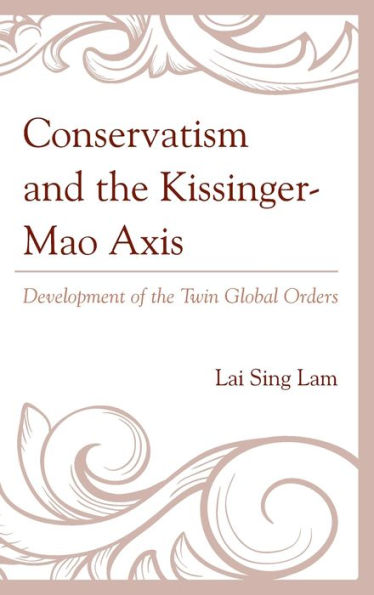5
1

Conservatism and the Kissinger-Mao Axis: Development of the Twin Global Orders
236
by Lam Lai Sing
Lam Lai Sing

Conservatism and the Kissinger-Mao Axis: Development of the Twin Global Orders
236
by Lam Lai Sing
Lam Lai Sing
Hardcover
$121.00
-
PICK UP IN STORECheck Availability at Nearby Stores
Available within 2 business hours
Related collections and offers
121.0
In Stock
Overview
Kissinger’s dual-purpose instrument of the US-China and US-Soviet détente was devised to achieve a stable balance of power in the contemporary world in the second half of the 1960s. Stimulated by both Kissinger’s doctrine and the historical novel, the Romance of the Three Kingdoms, Mao’s global order of tripolarity was created to feature the new US-China relations in the early 1970s with his initiative of the ping-pong diplomacy through this Kissinger-Mao axis. This made his quest for a modernization revolution possible with the Western market oriented approach.Strengthening Mao’s modernization program, Xiaoping’s “good-neighborhood” policy was designed to induce the world to help modernize China. Vitally including Russia with the collapse of the Soviet Union, Deng’s policy helped maintain a peaceful and stable international environment, though it also marked the end of Mao’s global order.Perceiving the PRC’s rise as a threat to its dominance in the Asia Pacific region, the US containment effort was enhanced with US-Japanese collusion and siding with the Philippines and Vietnam in relevant maritime disputes with the PRC. The US united with the Republic of Korea, nations in Southeast Asia, and Australia in establishing a wide-range alliance to go against the “China threat.”The post-Cold War, eastward expansion of the US-led NATO and the Russian determination to be a great power again, contributed to tension with the United States. The Russian desire to maintain its nuclear deterrent capability was at odds with the US missile defense plans. Thus, the US deployment of its missile shield in Eastern Europe as part of its strategic configuration in Alaska and the Far East was to contain Russia from both the Far East and Europe.

Product Details
| ISBN-13: | 9781498511391 |
|---|---|
| Publisher: | Lexington Books |
| Publication date: | 05/20/2015 |
| Pages: | 236 |
| Product dimensions: | 6.10(w) x 9.10(h) x 0.90(d) |
About the Author
Lai Sing Lam is an independent scholar.
Table of Contents
Part I: Background of Kissinger’s Doctrine of Balance of Power in Action- The Postwar International Environment: The American-Soviet-Chinese Triangle
- The Kissinger-Mao Axis I: The Integration of Kissinger’s Balance-of-Power and Mao’s
- The Kissinger-Mao Axis II: Mao’s Modernization Revolution and Deng the Successor
- The Kissiner-Mao Axis III: The Post-Dengist Economic Development: Deng’s “Good-
- The New American Containment of China
- The New US-led NATO Containment of the Rising Russia
From the B&N Reads Blog
Page 1 of
